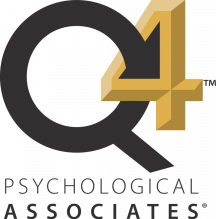Anyone who’s dealt with a de-motivated workforce knows that it can seriously harm your organizational productivity and culture. That’s why, Whether you’re calling it “quiet quitting” or not low engagement and high turnover are top-of-mind issues for leaders across industries.
So, what’s a leader to do when their direct reports are disengaged and despondent? We asked Psychological Associates Vice President of Organizational Consulting Cindy Lefton for her advice, and she offered a simple solution that any leader can try: It’s all about meaningful recognition.
What Is Meaningful Recognition?
A concept that originated in the nursing field, meaningful recognition is a form of feedback that acknowledges how the recipient made a difference. In order to be “meaningful,” this feedback should be relevant to the person being recognized and equal to their contribution.
That means, for example, that you shouldn’t give the same feedback when your team member catches a typo in an internal report as you would when they provide an idea that saves your department thousands of dollars. Recognition needs to match the actions taken. Similarly, as a leader who practices meaningful recognition, you should understand that a gift card to your favorite steakhouse isn’t a relevant reward for your vegetarian colleague’s hard work — recognition should be meaningful to them, not you.
And while the term “meaningful recognition” is primarily used in healthcare, its utility and benefits extend far beyond any one industry. At its core, meaningful recognition is about applying a level of common-sense compassion to all of your interactions.
But leaders aren’t just doing this to be nice — research has found that recognizing people in a meaningful way can decrease stress, increase enjoyment, and increase job satisfaction.
Meaningful Recognition is All About Behavior
As with the Dimensional Model of Behavior, the successful application of meaningful recognition relies on awareness of others’ behaviors, as well as your own. When recognizing the contributions of a member of your team, you’re calling on your own knowledge of behavior to size them up and determine what’s meaningful or relevant to them. For instance, as a Q4 leader, you recognize that your Q3 colleague might enjoy the camaraderie of an organized happy hour. At the same time, your Q2 direct report would likely be uncomfortable if you surprised them with an award at the all-company meeting.
Meaningful recognition also requires an element of self-awareness — remember, it’s not about the feedback giver; it’s about the recipient. Many people offer recognition with the hope of being recognized in return — after all, it’s only natural to want someone to say “thank you” after you give them a great gift!
But while it’s nice to be appreciated when showing appreciation, that shouldn’t be the goal. When recognizing others, take a look at yourself first — is your display of appreciation genuine? Is it designed with the recipient in mind? If the answer to both of those questions is “yes,” you’re on the right track.
Shine a Light on What’s Right with Meaningful Recognition
One of the greatest benefits of practicing meaningful recognition is the positive outlook it provides. When you recognize people in a meaningful way, it shifts your focus from the mistakes and the complaints to noticing all of the right going on. Across industries, there is a lot of “right” going on each and every day.
This is not to say we should ignore problems — far from it. Constructive feedback is vital to growth. But we should endeavor to devote as least as much time to recognizing what is going right as we do to what is going wrong.
At the end of the day, meaningful recognition isn’t going to put a person on a beach or pay their bills. But they will go to bed at night knowing that what they did made a difference and mattered to another person. That’s a significant contributor to both retention and job satisfaction. And that’s something every leader should want to be a part of.












